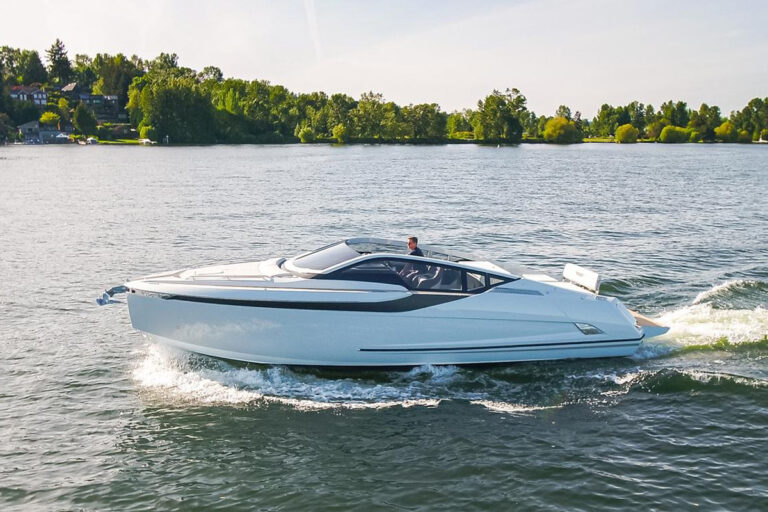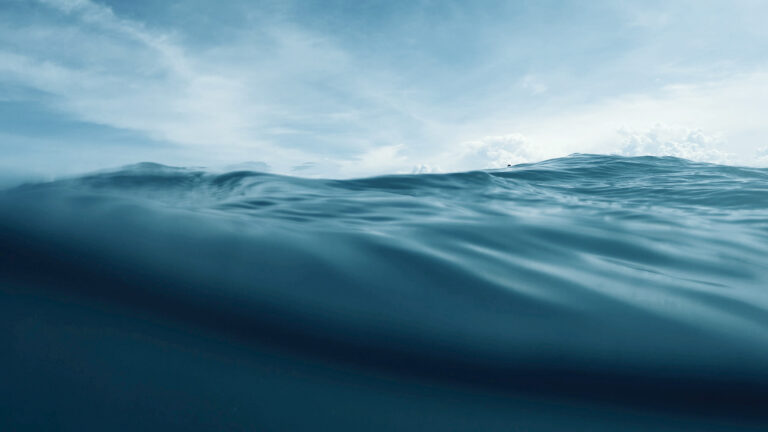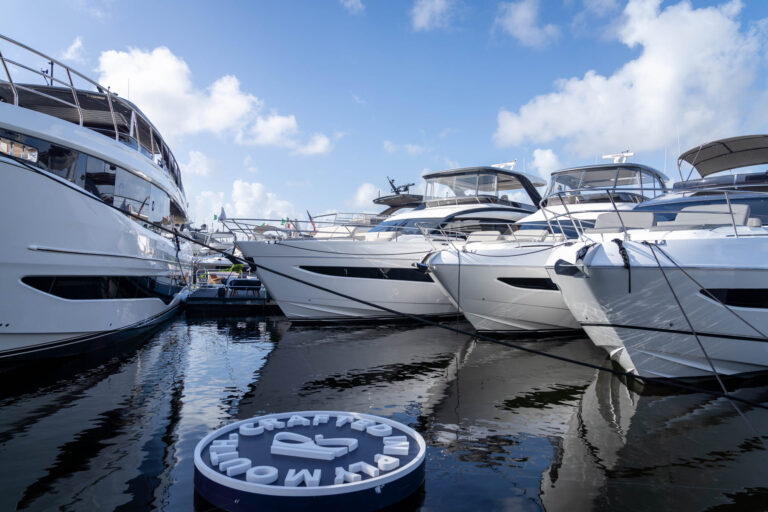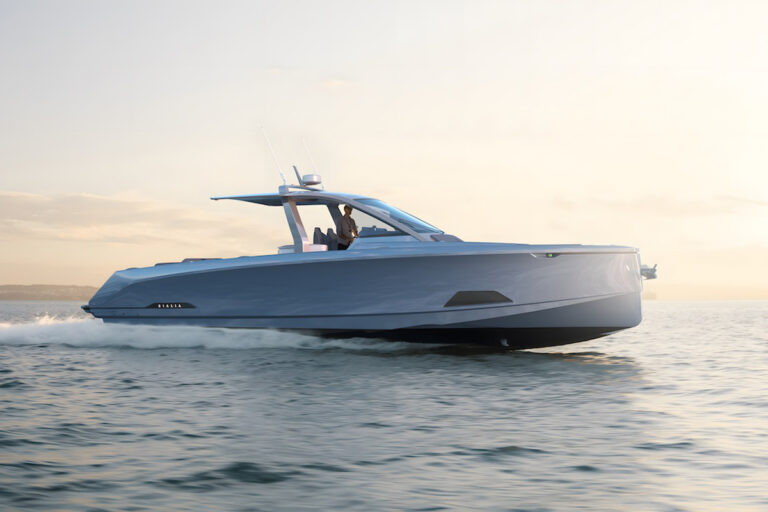What do you do after you’ve been the first general manager of Hewlett Packard’s computer business, the venture capitalist behind a few nice little start-ups such as Amazon, AOL and Genentech, and perhaps the only man to have been chairman of three different New York Stock Exchange-listed companies at the same time? You already restored a 135-foot classic Herreshoff schooner and a 1930 motoryacht and amassed one of the world’s premier classic car collections-supercharged sports cars from the 1920s and ’30s. You’ve raised two children, survived your first wife, re-married (and amicably divorced) an author of steamy bestsellers. You have sailed to the Arctic, Antarctica, the out islands of Fiji and most points in between. So what do you do now?
Well, you could a) become the star of a reality TV show that’s a cross between The Bachelor and How to Marry A Millionaire; b) write your own romance novel and put the words “sex” and “zillionaire” in the title; c) build one of the world’s largest and most innovative sailing yachts.
If you are Thomas Perkins, you might do at least two out of the three.
This month, Sex and the Single Zillionaire, a debut novel by Tom Perkins, hits the bookshelves and, if all goes well, the hull of Maltese Falcon, Perkins’ revolutionary 289-foot Perini Navi “clipper yacht,” will hit the water.
It took Perkins 10 days to write the first draft of Sex and the Single Zillionaire, the story of a lonely Wall Street titan who agrees to appear on a reality TV show similar to The Bachelor. In real life, Perkins was approached for this role, turned it down and then tried to convince his ex-wife, romance novelist Danielle Steel, to write about it. She declined and suggested that he write the story instead. Perkins, who had read Steel’s manuscripts for years, tapped out a 288-page book, to be published by Regan Books this month. “I had a lot of help in the editing stage from Danielle Steel and Judith Regan,” Perkin says and adds proudly, “but there was no ghost writer on this.” The book is his.
His other opus, Maltese Falcon, is, in many ways, an even juicier story. The project has taken Perkins, his designers and Perini’s team of 300 laborers more than five years to build. It has taken history’s largest single order of carbon fiber for her masts (“There’s more carbon in Falcon’s masts than in a Stealth bomber,” Perkins claims). It’s given naval architect Gerry Dijkstra the chance to bring to life the DynaRig, a blue-sky concept first dreamed up in 1966 in Germany and never tested. It’s caused builder Fabio Perini to challenge his yard in Turkey to come up with new approaches to everything from winch design to joinerwork. And it’s kept Tom Perkins’ intricate mind racing.
The day after Thanksgiving, Perkins is tying up loose ends at his Tudor-style home on San Francisco Bay’s Belvedere Island, getting ready to move to his estate in East Sussex, England, for the next month. “I don’t need this anymore,” Perkins says, dismissing the rooms filled with antiques, Persian carpets, oil paintings and ship models with a wave of the hand. “I’m going to spend most of my time on Maltese Falcon.”
A few minutes later, he picks up a remote-controlled model helicopter and zips it around the high-ceilinged living room, expertly maneuvering the buzzing toy’s dual rotors past precious vases and oil paintings.
Falcon, as the handsome, sandy-haired 74-year-old likes to call her, is about as similar to the Belvedere home as U2’s Bono is to Beethoven. Everything in the Ken Freivokh-styled interior is high tech-all glass and ebony, leather and carbon, not unlike the penthouse apartment that Perkins’ fictional protagonist lives in.
An atrium with clear glass floors surrounds the main mast well, with its staircase spiraling down three decks. Above the table in the dining room, a skylight blind opens like the iris aperture on a camera. The floors here are leather, and Shoji screens give a light feel. Elsewhere, Perkins’ collection of contemporary art (with large-scale canvases by Bo Bartlett, Squeak Carnwarth and others) covers the walls.
The interior looks light and, remarkably, is. Thanks to the freestanding masts, the traditional chainplates and bulwarks could be dispensed with, as the designers looked to save weight throughout. Though “light” might seem like a strange adjective for a steel boat that weighs 2.6 million pounds, this is, after all, built for a racing sailor.
“I like to sail fast,” says Perkins as we sit down for lunch, in answer to the question why build a boat as big and as complicated as Maltese Falcon. “And there are two ways you can do that: go light or go long. I went for long and kept the boat as light as possible.” He pauses and then adds, “In strong winds I think this boat can beat Jim Clark’s Athena and Joe Vittoria’s Mirabella V,” he says, referring to the two other largest sailing yachts in the world.
Perkins has owned a McLaren F-1, a Bugatti EB 110 and currently drives a Porsche Carrera GT, but he is not what you would typically think of as a speed demon. He grew up cruising on Long Island Sound. Only after he moved to the Bay Area, post MIT and Harvard Business School, did Perkins buy his first sailboat, a 17-foot Teak Lady. He started racing International One Designs and then bought a Rhodes yawl for offshore sailing. His taste for classic designs continued and eventually he restored Atlantide, a 122-foot classic motoryacht built in 1930, and Mariette, a 135-foot Nat Herreshoff schooner, built in 1915.
It wasn’t until the ’80s when Perkins had already formed one of the country’s top venture capital firms, Kleiner & Perkins (now Kleiner, Perkins, Caulfield & Byers) that his wife suggested they build a “big boat.” That was the first Andromeda La Dea, the 141-foot Perini. That was followed in 2000 by a second Andromeda, a 154-foot Perini ketch.
For Perkins, a “bigger boat” didn’t mean an end to dipping the rail. He entered Mariette in everything from Antigua’s Classic Yacht Regatta to the Nioulargue to the Transatlantic Challenge. He sailed and raced Andromeda in events around the world.
Perkins is not one to fly into port to meet his yacht: He enjoys the deliveries as much as the destinations. But while sailing from Norway back to New England, he and his captain made a decision that may have saved their lives. “We were off the Grand Banks,” he says, “and a huge storm was brewing, blowing maybe 70 and stacking the waves up. We could sail on through or wait it out. We sailed on.” A few days later, he realized that storm had knocked into the maelstrom that became famous as the “perfect storm.” “If we’d stayed out, it might have killed us,” he notes.
Seventy knots is the type of weather he hopes Maltese Falcon-with three free-standing, rotating carbon-fiber masts, holding 25,800 square feet of canvas on 15 square sails-can handle. And he’s tested her for it, tensioning and torquing a critical section of mast until it broke, just when the computer predicted it would. Other safety precautions abound and though Perkins initially had a complex computer-driven plan for controlling the sails on the boat, Perini convinced him that “stupido e meglio”-that foolproof, mechanical systems would be better.
Still, it is a push-button boat in a very literal sense. “I can teach anyone to sail this boat in thirty minutes,” Perkins claims as he shows me a diagram of the control panel with touch-sensitive displays of the 15 sails, each with three buttons: furl, unfurl and stop. “It takes only minutes for the boat to tack-just think, you don’t have all those lines and rigging to run around.”
I can start to see where this is going: Is Perkins really planning to race her? The boat is nearly the length of a football field and will carry more sail area than three America’s Cup yachts, all with spinnakers set. “With all that sail area she’ll fly upwind and I may go after some of the old clipper ship records, such as New York to San Francisco,” says Perkins, his eyes shining at the thought. “Computer estimates put her surfing at up to 30 knots off the wind and reaching 15 to 18 knots upwind, in 25 knots of true-with an apparent wind angle of 25 to 28 degrees.” That should be plenty to break clipper ship Northern Light’s old 1854 New York to San Francisco record via Cape Horn, one that stood for 150 years before a multihull topped it.
As Perkins goes on about the predicted speeds, and lunch finishes up, it all starts to make sense. Here is a man who has a love for the glamour of yachting’s past-the beauty of classic yachts and the thinking behind them. But he is, as he says, “a tech nerd,” who has spent more time watching his models being tank-tested than any other large yacht owner. His Silicon Valley mind wrapped itself around every detail of the technology and he learned Italian so he could converse with builder Fabio Perini (“one of my very good friends,” Perkins says). Falcon is a perfect meld of his two worlds-history and high tech. “I think this is one of the most important projects in the history of yachting,” he says quietly, summing it up.
That’s a big statement. But it comes from a man who knows and loves nautical history. Perkins’ favorite author (other than Ms. Steel, of course) is the late Patrick O’Brian, author of Master and Commander and 19 other Aubrey-Maturin adventures and classic Napoleonic novels set on the high seas in the early 1800s.
Perkins had the chance to get to know O’Brian when, on a whim, he invited him to spend a week on Andromeda La Dea in the Mediterranean in 2000. O’Brian insisted that Perkins come along too, and in an article in Latitude 38 Perkins described what it was like to spend time sailing with the writer he admired, only to discover that O’Brian really couldn’t sail.
“He was a fascinating man, one of the most well-read people I have ever met, and became a very good friend,” sighs Perkins, who remained very much in touch with O’Brian until his death. “But he was a very private and reticent man and in many ways a character of his own creation. He didn’t really know how to sail, he wasn’t Irish and his life wasn’t at all like his novels.” Perkins continues. “But he could be charming and on a boat, he was like a little kid. Sailing with him was one of the highlights of my life and, I believe, of his.”
So what would Patrick O’Brian think of Perkins’ projects today? It doesn’t take long for Tom Perkins to answer. “Oh, he’d be amused by my book, and I wish he could have read it-though I don’t pretend to be a writer in his league-no one is! But I think he’d really, really like my new boat.”
The Falcon Takes Wing
To make one of the largest, fastest sailing yachts ever, Tom Perkins went back to the future, resurrecting a unique 1960’s concept called a DynaRig.
There’s never been anything like Maltese Falcon. Without her rig, you might recognize this as a Perini Navi sailing yacht, but add the three-masted DynaRig and all preconceptions go down the drain. The 289-foot steel-hulled yacht is, at her heart, the modern incarnation of a square-rigged clipper ship.
Dichotomies abound. She is traditional to the point of being old-fashioned in some areas, yet modern with technology that is beyond cutting edge. She is incredibly complicated from an engineering and construction standpoint, yet if all goes as planned as she does her trials this spring, she’ll be quite simple to sail. And despite her immense size-she’s 10 times the tonnage of a classic J Class yacht-Maltese Falcon will carry six or fewer guests when operated in “owner mode.”
Starting with a hull originally built on speculation, yachtsman Tom Perkins collaborated with builder Fabio Perini, and acted as his own project manager. He selected Gerard Dijkstra as naval architect and Ken Freivokh as designer, and assembled a host of suppliers and subcontractors to do what had never been done before.
The DynaRig concept was developed in Germany in the 1960s, as a propulsion alternative for commercial ships in the face of a looming energy crisis. When the crisis actually materialized in the early 1970s, further refinement and some testing followed, but no DynaShips were built and the idea eventually went into the archives.
Dijkstra brought the DynaRig concept out again as one of several alternative sail plans for Perkins’ consideration. Extensive experimentation and testing followed, with towing models, wind tunnel tests, larger self-propelled models and full-scale sail and rigging tests. While Dijkstra acknowledges the groundbreaking efforts of his own team on the yacht’s technical aspects, he is quick to point out that Freivokh’s work on the interior is equally innovative. From a flexible arrangement plan that offers a quick change from owner mode to charter mode, to the extensive use of exposed carbon fiber for weight reduction, the designer fulfilled the dreams Perkins presented.
Of course, there wouldn’t be a Maltese Falcon without Perini Navi. While all previous Perini yachts have been completed in Viareggio, Italy, many on hulls built in Tuzla, Turkey, Falcon was built entirely at an expanded facility in Tuzla. There was simply not enough room in Viareggio for the huge yacht.
Learn more about Falcon’s design at www.hiswaysymposium.com/pdf/Gerard Dijkstra.pdf.









